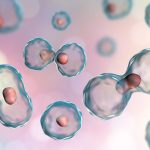Human fibroblasts are a type of connective tissue cell that plays a vital role in the maintenance and repair of various tissues in the human body. Fibroblasts are derived from mesenchymal cells and are widely distributed throughout connective tissues, including the skin, tendons, ligaments, and organs.
Here are some key characteristics and functions of human fibroblasts:
- Cell Structure: Fibroblasts are elongated, spindle-shaped cells with a prominent nucleus and a cytoplasm rich in organelles, such as endoplasmic reticulum and Golgi apparatus. They have an extensive network of cytoplasmic processes that allow communication and interaction with other cells and extracellular matrix components.
- Extracellular Matrix (ECM) Production: Fibroblasts are primarily responsible for synthesizing and secreting components of the extracellular matrix, including collagen, elastin, fibronectin, and other structural proteins. They contribute to the formation and maintenance of the ECM, providing structural integrity, support, and elasticity to tissues.
- Tissue Repair and Wound Healing: Fibroblasts play a crucial role in tissue repair and wound healing processes. Following tissue injury, fibroblasts migrate to the site of injury and proliferate. They secrete collagen and other ECM components, forming a provisional matrix that acts as a scaffold for tissue regeneration. Fibroblasts also help to remodel the ECM during the healing process.
- Synthesis of Growth Factors and Cytokines: Fibroblasts are involved in the synthesis and release of various growth factors and cytokines that regulate cellular activities, including cell proliferation, differentiation, and inflammation. For example, fibroblasts produce transforming growth factor-beta (TGF-β), platelet-derived growth factor (PDGF), and fibroblast growth factors (FGFs), which are important for tissue development and repair.
- Cell Communication and Signaling: Fibroblasts can communicate and interact with other cells through direct cell-cell contact and by releasing signaling molecules. They participate in intercellular signaling networks that influence cell behavior, tissue homeostasis, and immune responses.
- Role in Disease: Dysregulation of fibroblast function is implicated in various diseases, including fibrosis, cancer, and inflammatory disorders. In conditions such as fibrosis, fibroblasts can undergo excessive activation and produce excessive amounts of ECM components, leading to tissue scarring and dysfunction.
Fibroblasts are commonly used in laboratory research and cell culture studies due to their availability, ease of isolation, and ability to proliferate in vitro. They serve as a valuable model for studying cellular processes, tissue engineering, and the development of therapies for various diseases and injuries.

Leave a Reply